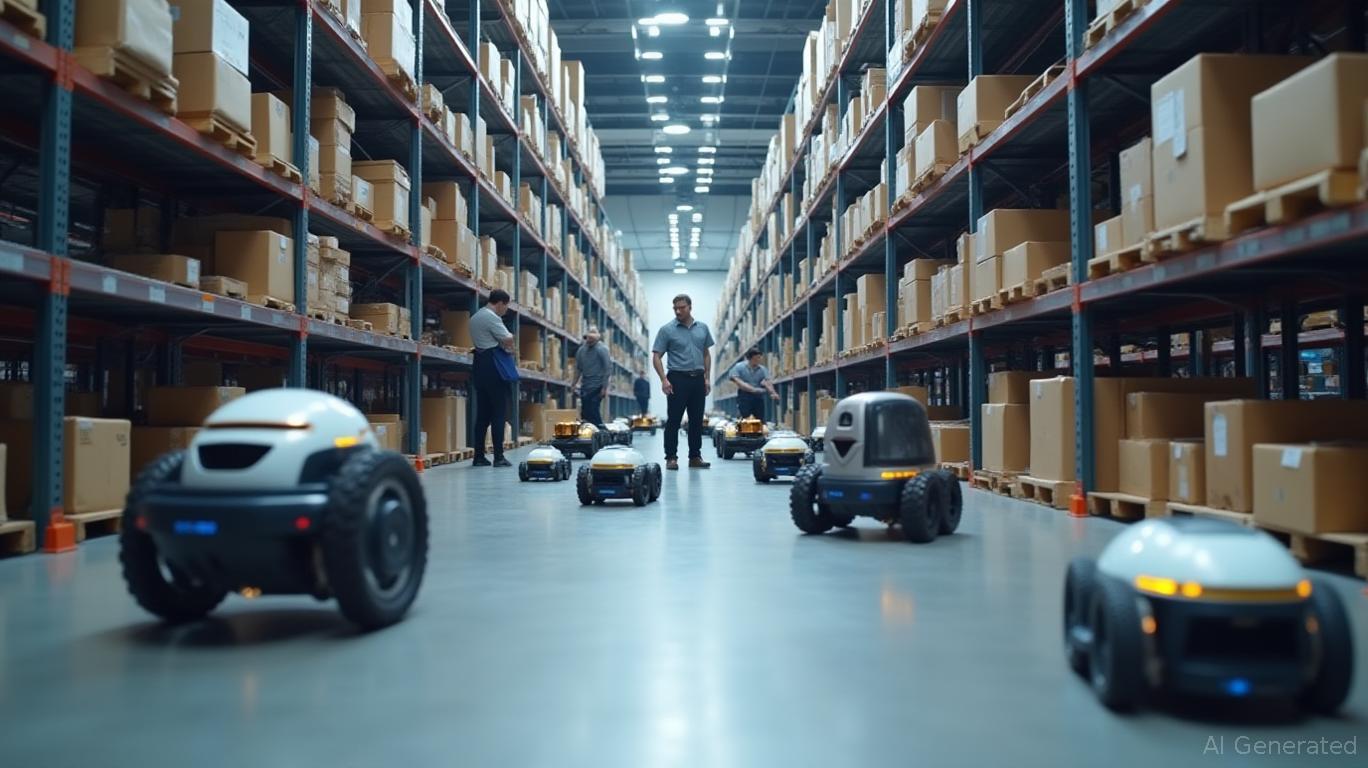Amazon's Hidden Growth Engine: Why Now is the Time to Buy Despite the Layoffs
In a world where "everybody's scared," as I've often said, the best opportunities emerge when the crowd focuses on noise while ignoring structural dominance.
(AMZN) is currently under siege by short-term headlines about layoffs and economic uncertainty. But dig deeper, and you'll find a company primed to capitalize on three unstoppable forces: resilient consumer demand, AI-driven cost efficiencies, and a global e-commerce tailwind. This is a contrarian's dream—a $1.2 trillion titan trading at a discount to its innovation potential. Let me explain why now is the time to buy.
The Contrarian's Play: Resilient Consumers, Not Fragile Balance Sheets
Scott Galloway's analysis of Q2 2025 data reveals a paradox: consumers are spending more than Wall Street expects, even as headlines scream about layoffs and slowing wage growth. JPMorgan's card data shows retail sales ticking up 0.45% month-over-month, while mortgage rates at 6.84% remain manageable for most homeowners. Here's the key: Amazon's customers aren't pulling back. The company's Prime membership retention, Whole Foods premiumization, and global e-commerce expansion all point to a sticky customer base.
While critics fixate on Amazon's $27 billion in layoffs since 2022, they're missing the bigger picture: these cuts are a calculated bet on AI efficiency. The company is shedding layers of bureaucracy to become a leaner, AI-powered machine. The result? A 15% increase in individual contributors—the workers actually building the future—and a 10.8% operating margin in . That's a 40% margin expansion since 2020, and it's just the beginning.
The AI Edge: Where Amazon's Moats Are Widening
Amazon's AI strategy isn't just about cutting costs—it's about redefining markets. Take its cloud division, AWS, which now generates $29.3 billion in quarterly revenue (up 17% year-over-year). AWS isn't just selling servers—it's selling the infrastructure for the AI revolution. Custom chips like the Trainium2 and partnerships with Anthropic are turning AWS into the go-to for businesses building AI tools. This isn't hype: 80% of routine customer inquiries are now handled by AI chatbots, reducing labor costs while boosting response times.
But the real kicker is Bedrock, Amazon's AI model marketplace. By democratizing access to cutting-edge models (like its $8 billion investment with Anthropic), Amazon is turning AI into a service-as-software play. This isn't just for tech firms—it's for mom-and-pop stores needing chatbots or farmers optimizing supply chains. And don't overlook the $100 billion capital expenditure in 2025: this isn't a cash drain; it's a bet on owning the AI infrastructure of tomorrow, just as AWS dominated cloud computing in the 2010s.
The Whole Foods Gambit: A Premium Play in a Discount World
While critics dismiss Amazon's grocery business, they're ignoring a $200 billion opportunity. Whole Foods' average basket size has grown 12% in 2025, driven by premiumization and the rise of "conscious spending." This isn't a fad—it's a structural shift. Younger shoppers are willing to pay more for ethically sourced products, and Amazon's ability to merge Prime perks with curated groceries creates a moat no competitor can match.
Why the Shorts Are Wrong: The "Layoff" Narrative Is Misleading
Yes, Amazon cut jobs—27,000 since 2022—but here's what the shorts miss: these are not core innovation roles. The company is shedding administrative bloat while doubling down on high-skill jobs like AI engineers and prompt designers. Internal data shows 47% of employees expect AI to replace 30% of their work within a year—but that's not a threat; it's a productivity multiplier. The goal? To free up capital for the $3.8% GDP growth the Atlanta Fed projects for Q2 2025.
The Buy Signal: Valuation at a Crossroads
Amazon's P/E ratio has collapsed to 28x, a discount to Microsoft's 32x and Alphabet's 23x. This ignores three catalysts:
- AWS's AI revenue surge: Analysts estimate AI-as-a-service could add $10 billion in annual revenue by 2026.
- Margin expansion: The 10.8% operating margin is set to climb as AI cuts costs and boosts pricing power.
- Global e-commerce dominance: Amazon commands 40% of U.S. online sales and is expanding aggressively in India and Southeast Asia.
The Bottom Line: Buy the Dip, Ignore the Noise
The market is pricing in a worst-case scenario of "AI displaces all jobs and consumers vanish"—a narrative that ignores Amazon's structural advantages. This is a company with $26 billion in cash, a $155.7 billion revenue run rate, and a leadership position in AI, cloud, and e-commerce. The layoffs? They're pruning the deadwood to fuel growth.
Action Items for Investors:- Buy AMZN now at $110/share, targeting $150 within 12 months.- Look for a Q2 earnings beat: Analysts expect $13–17.5B in operating income—beat that, and the stock soars. Historically, when Amazon has exceeded earnings estimates by over 10%, a 30-day hold strategy has delivered an average compound annual growth rate (CAGR) of 7.57%, though with moderate risk-adjusted returns (Sharpe ratio of 0.42). This historical performance underscores the potential upside of buying the dip after such beats—providing statistical support to the contrarian thesis outlined here.- Stay long-term: This isn't a trade; it's a 5-year play on AI-driven efficiency and global dominance.
The crowd sees layoffs and fears a slowdown. I see a company sharpening its tools for the next decade. This is the Amazon of 2010 all over again—undervalued, misunderstood, and about to explode. Don't miss it.
Final Call: Contrarian investors, this is your moment. Buy Amazon now—before the crowd catches on.

Comments
No comments yet